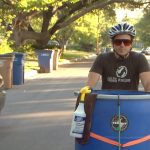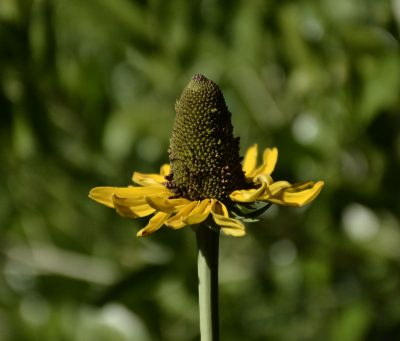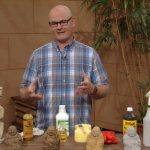How can I keep my compost pile active?
Like me, you may get busy with other activities and only turn it once a season, when this garden chore finally makes its way back to the top of your garden maintenance to-do list.
Even though it WILL all turn into compost eventually, neglecting it slows down the process.
So, how do you get that fabulous potential pile of gardener’s black gold moving again?
And the answer is to add a bit of nitrogen when you turn it. Just a small amount will wake up those dormant, hungry microbes and get them moving again, heating up your pile and getting it to the finish line. Grass clippings are a great source of nitrogen, along with your kitchen scraps. Although adding those will feed your microbes, they also add to the volume of the pile, which you’re trying to decrease.
If you built your pile according to the recommended size of three feet tall and wide, adding more volume after you’ve first built it slows down the process. If you’re patient, that’s still a fine solution.
But if you’re looking to have some home-produced compost for your garden beds, adding a smaller volume source of nitrogen is better. Organic fertilizers that are relatively high in nitrogen work great, as does manure. But another great source is coffee grounds.
So I want to remind people about the wonderful program that we started to help increase coffee ground availability for savvy gardeners: Ground to Ground. Many local coffee shops have joined our initiative and are giving their coffee grounds away to anyone who will take them…absolutely free! Please visit our Ground to Ground website to find a coffee shop near you.

 The East Side Compost Pedallers
The East Side Compost Pedallers Jay Beard
Jay Beard Daphne Richards
Daphne Richards
 Merrideth Jiles
Merrideth Jiles